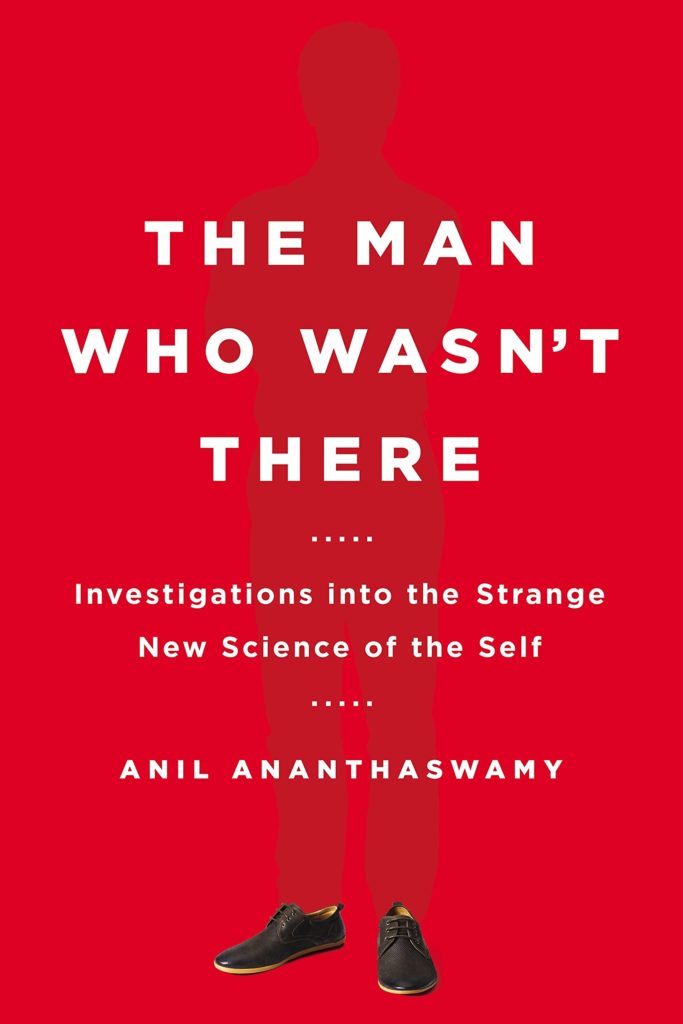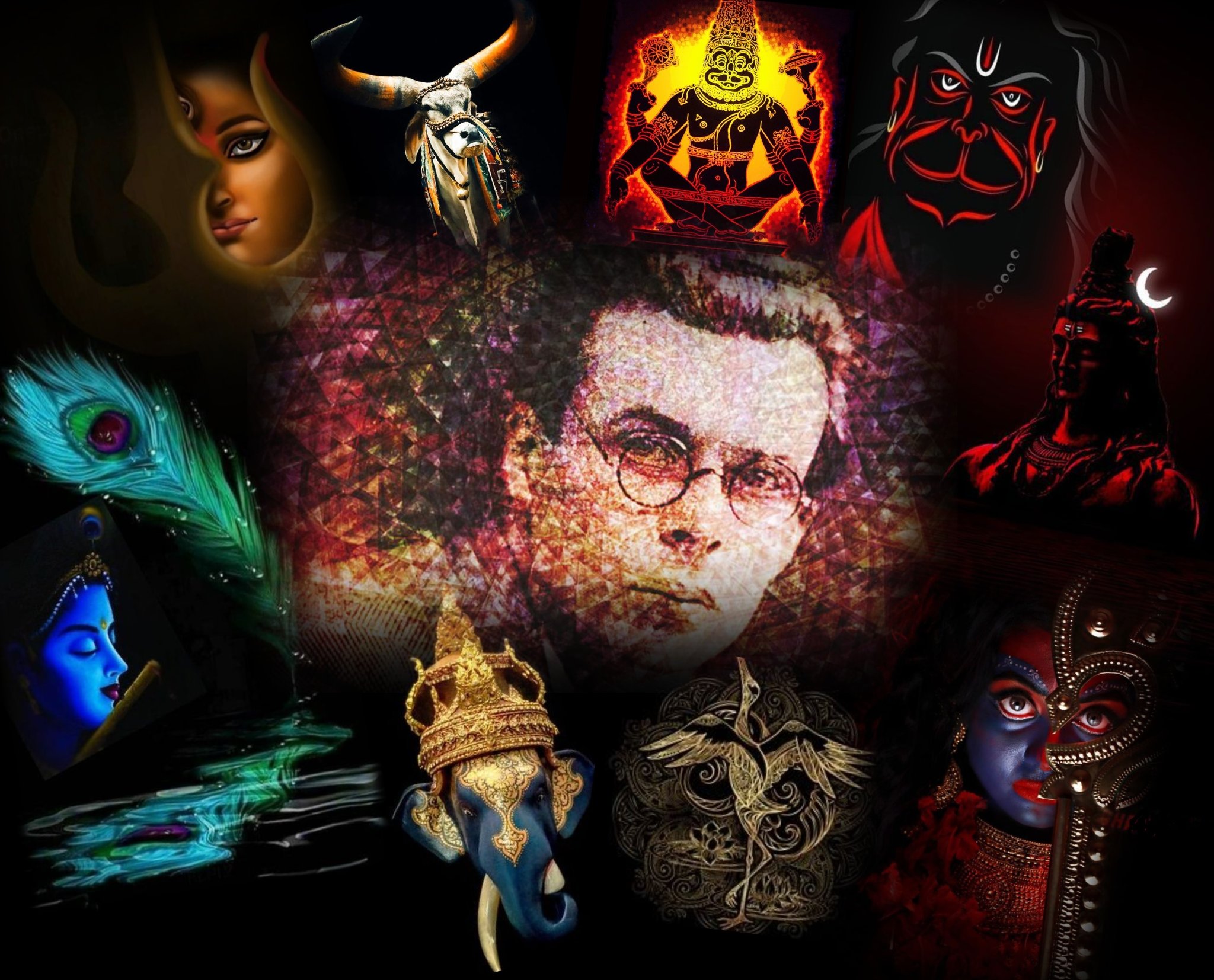- Visitor:18
- Published on:
A Book Review of Anil Ananthaswamy’s “The Man Who Wasn’t There”
What is that ‘I’ that remains when ‘me’ and ‘mine’ falls apart? If the ego is an illusion, who is the subject of this illusion? What insights the latest neuroscience of autism, schizophrenia, depersonalisaton and similar maladies offers to this nature of the self? Anil Ananthaswamy dives deep into these questions in his book.

For a long time, the nature and attributes of self have been analysed by different schools of philosophies and philosophers, saints, theologians and neuro scientists. From Buddha to Aquinas to Descartes to Metzinger all have their versions and theories. Anil Ananthaswamy, in his book “The Man Who Wasn’t There” tries to shed some light on the subject of self using recent developments in neuroscience, especially in the field of identity disorders like Cotard’s Syndrome, Alzheimer’s disease, BIID, Schizophrenia or Autism and even out of body experiences, which has enabled neuroscience to discard a few claims as well as raise some of the fundamental questions again.
Ananthaswamy begins the book with a popular Buddhist tale where a man gets all his organs replaced with those of another person’s body in the quarrel between two ogres who now wonders whether the body is truly his. He meets some Buddhist monks who tell him that there exists nothing like he or him.
The book then proceeds to describe multiple disorders and their effect on the patient’s identity. A Cotard’s syndrome patient will believe himself to be dead. A body integrity identity disorder (BIID) patient will feel that a leg or a hand of his body is not his own and a foreign object to such an extent that he would want to amputate it. Such disorders reject Descartes’s much hyped idea of “I think therefore I am” or “ one cannot be wrong about the contents of one’s own mind.”

Ananthaswamy proceeds further to disorders such as Alzheimer’s that result in erasure of the narrative self of a person, constituting a remembered past and an imagined future, depersonalisation, where everything including his own body and self will seem unreal to the patient and Autism, where the ability to view self as an object gets impaired. He also talks about how certain manipulations in body can give an out of body experience (when one feels a foreign object to be a part of his own body), certain regions in brain (insula), when stimulated by an external electrode or certain psychedelics can induce an ecstatic feeling.
How exactly those disorders produce notions about the self and what do they tell us about this ‘self’? In these mental diseases, out of many constituents of the self like memory or narrative, a particular one gets wiped out. The author uses scientific as well as philosophical evidence to examine what remains after something is gone and thus what constitutes the essential part of this self.
Let’s consider Alzheimer’s disease for instance. Alzheimer’s destroys an individual’s cognitive abilities and wipes out one narrative about himself. This narrative self is “not merely a remembered past but also an imagined future.” The person loses memory to the extent that he no longer remains able to perform basic things. Its impact has been described as “a steady erosion of selfhood”.
Lets now consider the case of depersonalization. “Whether perception, bodily sensation, memory, idea, thought or feeling carry this particular aspect of ‘being mine’ of having an ‘I’ quality, of ‘personally belonging”: all these seems alien to the body which has been termed as depersonalization.
According to some scientists, the brain is a prediction machine and that especially when it comes to external signals, “what we perceive is the brain’s best guess as to the cause of those signals.” So, the sense that they are mine depend on the brain making accurate interceptive predictions and minimizing the corresponding prediction errors. If the prediction doesn’t match then the sense of mine-ness gets removed from it.
These findings combined together suggests that the self as we know it is constituted of our memory, our sense of being embodied and a sense of mine-ness on actions, things and thoughts, seems to be an illusion played by the nature to optimise the function of human body. But this seems to be quite reductionist and the author himself is aware of this. In the chapter ‘The living dead’ he asks “We often hear of how the self is an illusion, that it is nature’s most sophisticated sleight of hand. But all this talk of tricks and illusions obfuscates a basic truth: remove the self and there is no “I” on whom a trick is being played, no one who is the subject of an illusion.”
Commenting on this reductionist tendency more explicitly in another chapter “The man who didn’t want his leg” Ananthaswamy says, “There is a tendency within neuroscience toward neurobiological reductionism, especially in the study of disorders, by viewing the brain-mind relationship as a one-way street, with the brain influencing mental activity, and not the other way around. fMRI or PET scans usually tell us about the relative change in activity in specific brain regions in a person with some disorder when compared with healthy controls. But except in clear-cut cases of neurological damage, such scans give us correlations between brain activity and a person’s condition; they don’t definitively establish whether the observed anatomical and functional aberrations seen in brain scans came first and caused someone’s condition (such as BIID) or whether ceaseless mental activity (thinking obsessively that “this leg is not mine,” for example) led to the changes in the brain.”
This problem has its root in the cultural underpinning in which modern science is grounded and within which framework it operates. A person versed in Indic knowledge system can understand that what is referred by self in this book or most scientific literatures is most of the times antaḥkaraṇa catuṣṭaya (Manas, Buddhi, Ahaṅkāra, Citta) and among them Ahaṅkāra mostly which gives the sense of agency and the sense of me or mine. But the antaḥkaraṇa catuṣṭayas despite being more subtle and closer to the self don’t constitute the actual self that is Ātman.
While we ascertain in the above that the self doesn’t refer to Ātman here but there is a distinction of self-as-object and self-as-subject done in the book and the later, self-as-subject, comes close to the idea of Ātman. The self-as-subject can be said to represent the draṣṭā or sākṣī (witness but not performer) bhāva of Ātman.
Throughout the book one finds that while a part of the self is destroyed, the self-as-subject stands apart and observes. The author says ,”It’s possible that during the very late stages of Alzheimer’s disease, when one’s narrative self is completely destroyed, all that is left is the self-as-subject, experiencing those aspects of the self that exist even before a narrative forms. One could argue that the self at its most fundamental is the self-as-subject, and it’s not one’s narrative.”
The following quote from a chapter on depersonalization entitled “I am as if a dream” illustrates the above point.
As with everything we have encountered so far, depersonalization too does not destroy the “I.” There is still the subjectivity—the self-as-subject—that is aware of being estranged from other aspects of the self, in this case the vivid emotions and feelings that give us our sense of being embodied. So, while no one is saying that our emotions and feelings are not integral to our sense of self, it’s nonetheless intriguing from a philosophical perspective that they don’t constitute the self-as-subject; the “I” stands apart, watching, observing.
Now, the sense of me and mine, the memory and the narrative of an embodied self: all of these together constitutes the ego, which turns out to be an illusion here. This illusion is being played on this Self with a capital ‘S’ i.e., Ātman. Ego forms the bedrock of western individualist worldview where my ‘right’ is in a constant fight with that of another person or group. But in the Indic world view where the ego has already been considered as a construct or ‘Māyā’ this problem does not arise.
In the 1st verse of his Nirvāṇa ṣaṭakam, Bhagavatpāda ādi Śaṅkarācārya says:
मनोबुद्ध्यहंकार चित्तानि नाहं
न च श्रोत्रजिह्वे न च घ्राणनेत्रे।
न च व्योम भूमिर्न तेजो न वायुः
चिदानन्दरूपः शिवोऽहम् शिवोहऽम्॥
(I am neither mind nor intellect nor ego nor citta. Neither I am the organs of senses nor I am the sky, earth or fire or air that constitutes the gross body. I am that Śiva, bliss and consciousness.)
This is not a place to discuss how different Hindu Darśanas view the Ātman. We will limit ourselves to Advaita and Buddhism, the ones talked about in the book.
While Buddhism posits that after denouncing each layer that constitutes the sense of ‘Self’, nothing remains that can be called the self. Advaita, on the other hand, denounces the multiplicity caused by NāmaRūpa (Name and Form) as Māyā which has been conceived (Āropita) on the Absolute Brahman that is beyond NāmaRūpa. An impersonal witness that is the subject of these experiences though not affected by them, is jivātman and in Advaita this jivātman which has recognised and is free from this Māyā, is one and same with Brahman.
In the Nirvāṇa ṣaṭakam which captures the Advaita darśana in a nutshell of merely 6 stanzas, Ācārya, when asked about his identity by his Guru, declares all the name, form, perceptions, almost all attributes except pure bliss and consciousness as not a part of His actual Self (Ātman). It follows the old Hindu dialectic of “Neti Neti” (not this, not this) and underlines the true nature of Self.
In the epilogue, Ananthaswamy after discussing various diseases and theories on self concludes that although the self-as-object seems to be an illusion, the self-as-subject still exists.
He asks “There is still an “I” that is suffering from schizophrenia, is depersonalized, is dealing with autism, is ecstatic, disowns body parts, has out-of-body experiences, loses its narrative, and even denies its own existence. Who or what is that “I”?” We will humbly submit that Ācārya Śaṅkara’s explanation stands valid, in fact vindicated here. Of course this is not to say that, we have arrived at that point or we can possibly arrive at such a point in time where we can explain the mystery of Brahman in terms of neurobiological phenomena. What this book does in our opinion is to ask a bold question, in front of which western philosophies collapse but Indic conceptions stand robust.
Center for Indic Studies is now on Telegram. For regular updates on Indic Varta, Indic Talks and Indic Courses at CIS, please subscribe to our telegram channel !
- 9 min read
- 0
- 0










